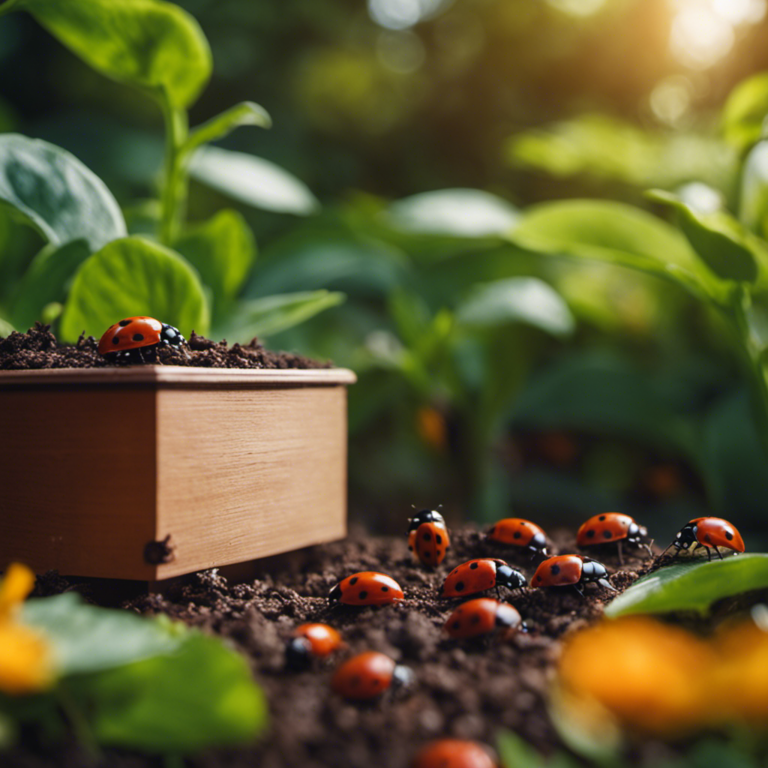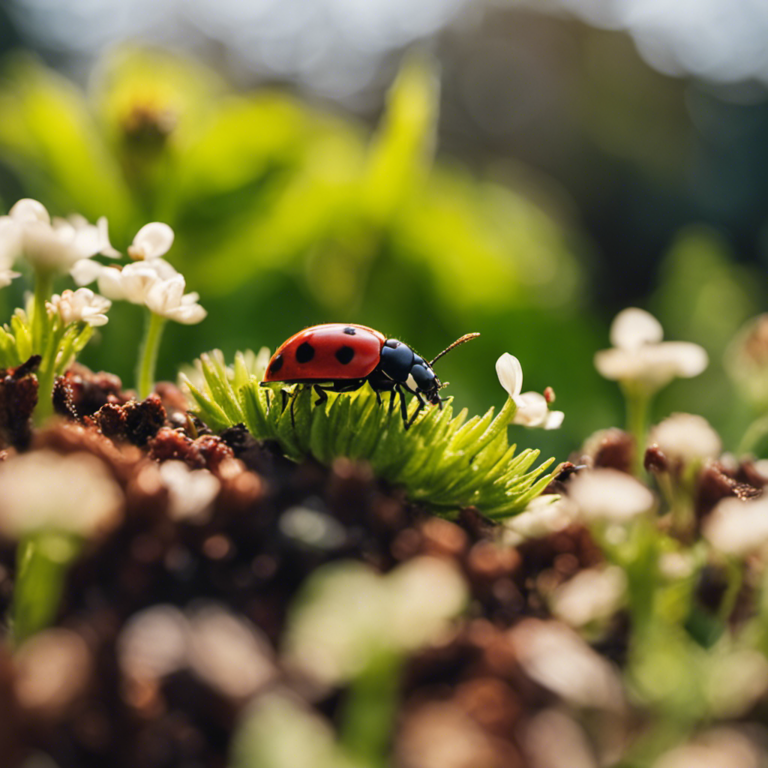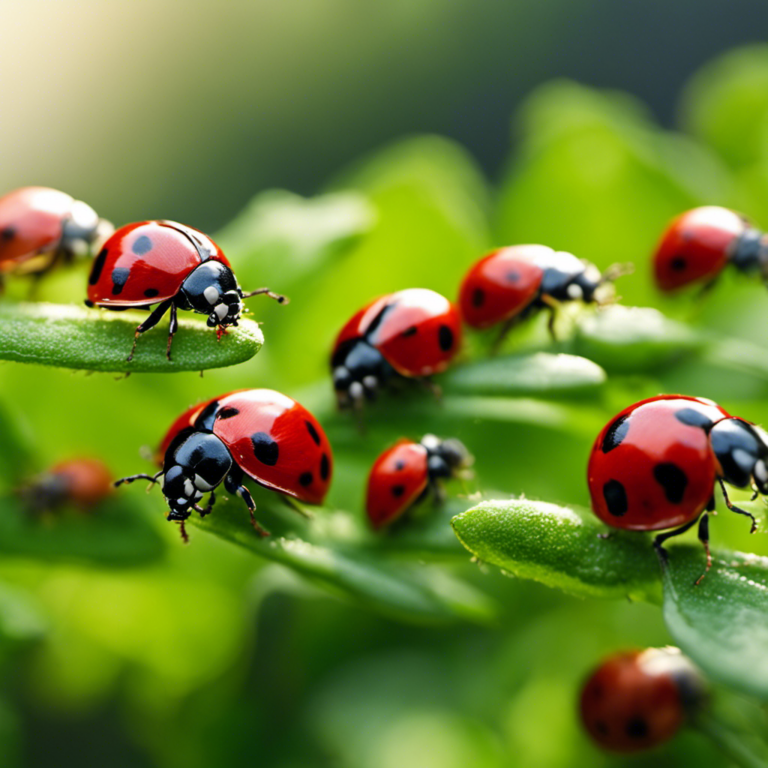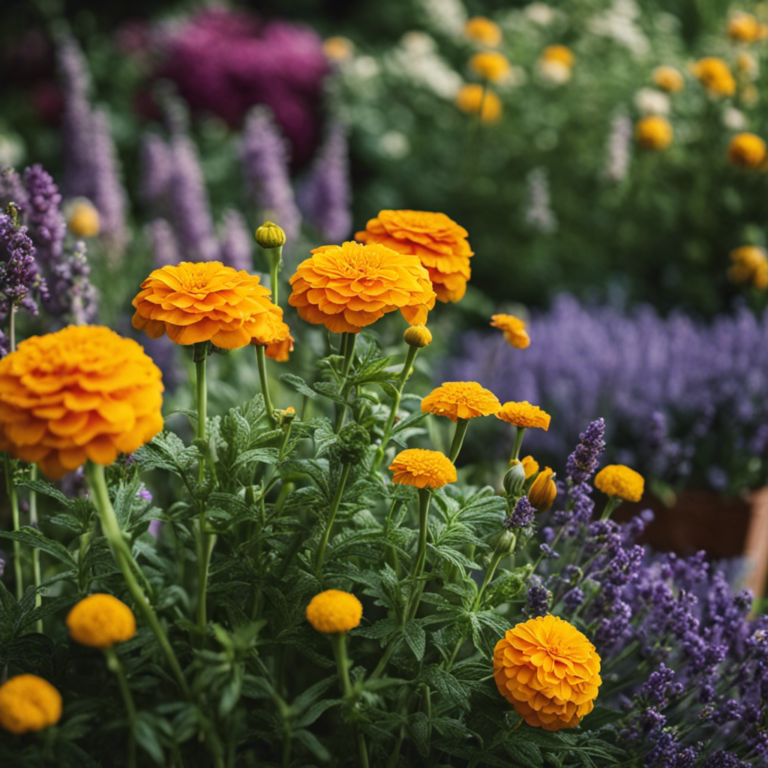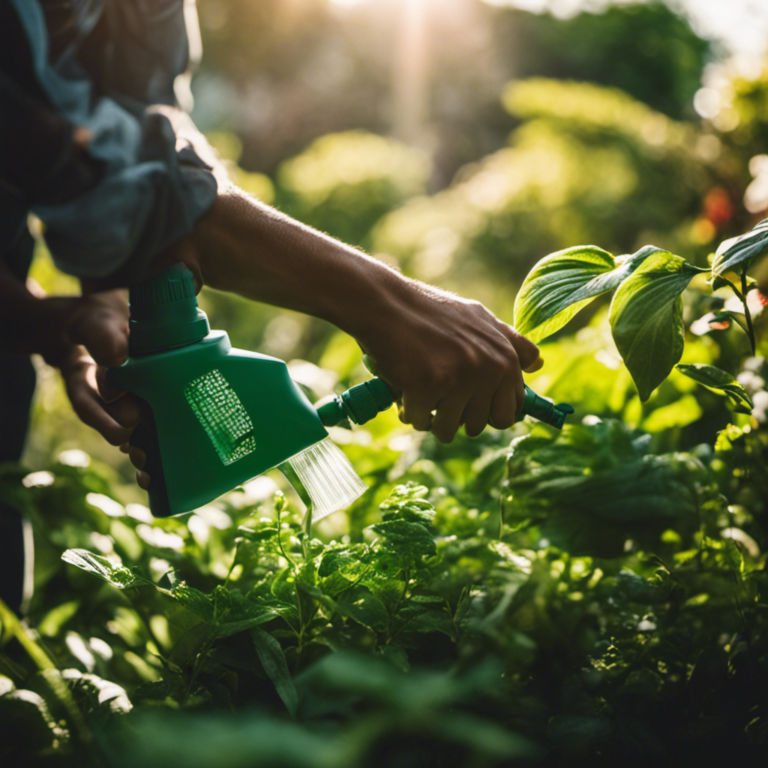Transforming your farm into a peaceful sanctuary, free from harmful pests and chemicals, is within your reach.
Did you know that you can achieve this by adopting eco-friendly pest control methods?
By incorporating natural predators, biological controls, physical barriers, crop rotation, and companion planting, you can enhance the beauty of your farm while protecting the environment.
These methods not only promote healthier produce for your customers but also contribute to a sustainable future.
Prepare to revolutionize your farm with the elegance of eco-friendly pest control.
Key Takeaways
Transforming your farm into an eco-friendly haven not only enhances its beauty but also contributes to a healthier environment. By implementing sustainable pest control methods such as attracting natural predators, using biological controls, creating physical barriers, practicing crop rotation, and adopting companion planting, you can establish a thriving farm ecosystem.
This approach will result in a pest-free farm that showcases the power of nature and sustainable practices. Your farm can serve as an example for others, highlighting the benefits of environmentally-friendly pest control.
"Implementing eco-friendly pest control methods on your farm is a win-win situation. Not only does it enhance the beauty of your farm, but it also contributes to a healthier environment. By attracting natural predators, using biological controls, creating physical barriers, practicing crop rotation, and adopting companion planting, you can establish a sustainable and thriving farm ecosystem.
This transformation will result in a pest-free farm that showcases the power of nature and sustainable practices. Your farm can serve as a model for others to follow, highlighting the benefits of environmentally-friendly pest control."
Natural Predators

Attracting beneficial insects to your farm is a sustainable and effective method of pest control. By incorporating natural predators into your pest management techniques, you can reduce the need for chemical pesticides and promote a healthier ecosystem.
Some examples of beneficial insects that prey on common pests like aphids and caterpillars are ladybugs, lacewings, and hoverflies. To attract these helpful insects, you can plant flowering plants such as daisies and marigolds, which provide nectar and pollen as food sources.
Creating habitats like insect hotels and planting cover crops can also provide shelter and breeding grounds for these beneficial insects.
Incorporating natural predators into your pest management plan not only reduces reliance on harmful chemicals but also encourages a more sustainable and environmentally friendly approach to pest control. It’s a win-win situation for both your farm and the ecosystem.
Biological Controls
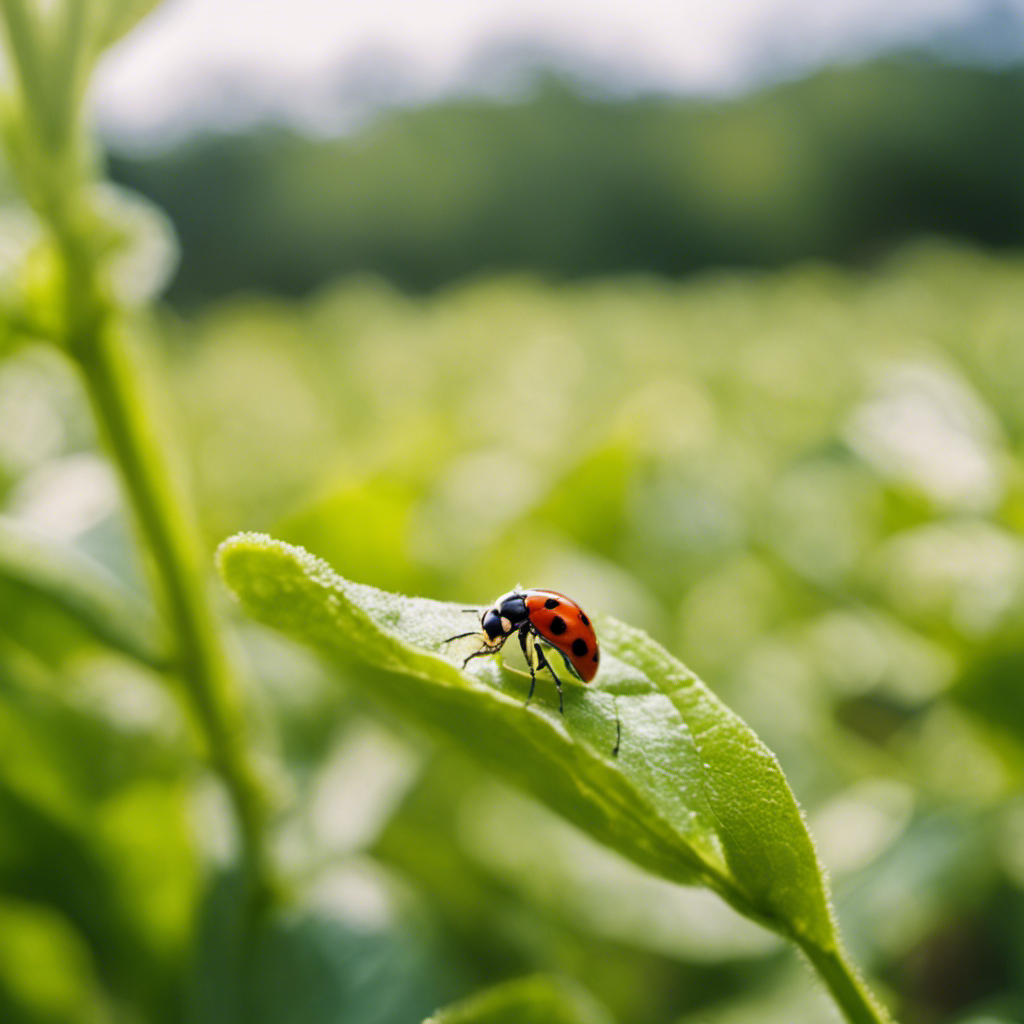
Utilizing biological controls can help enhance your farm’s eco-friendly pest control efforts. Instead of relying on harmful chemicals, biological controls involve sustainable alternatives and organic pest management techniques. This method focuses on using natural predators, parasites, and pathogens to naturally regulate pest populations.
One effective biological control method is the use of beneficial insects. These insects prey on pests, reducing their populations and preventing infestations. Ladybugs, lacewings, and praying mantises are commonly used as biological controls for aphids, mites, and other harmful pests.
Another option is introducing microorganisms that are natural enemies of pests. For example, Bacillus thuringiensis (Bt) is a bacterium that produces toxins harmful to certain pests, such as caterpillars. This can be applied as a spray or dust to control pest populations.
Incorporating biological controls into your farm’s pest management plan offers long-term and sustainable solutions that are safe for the environment. It promotes a healthy ecosystem on your farm, contributing to a balanced and thriving agricultural system.
| Biological Control Method | Target Pests |
|---|---|
| Beneficial insects | Aphids, mites, caterpillars, etc. |
| Microorganisms | Caterpillars, mosquitoes, etc. |
Physical Barriers
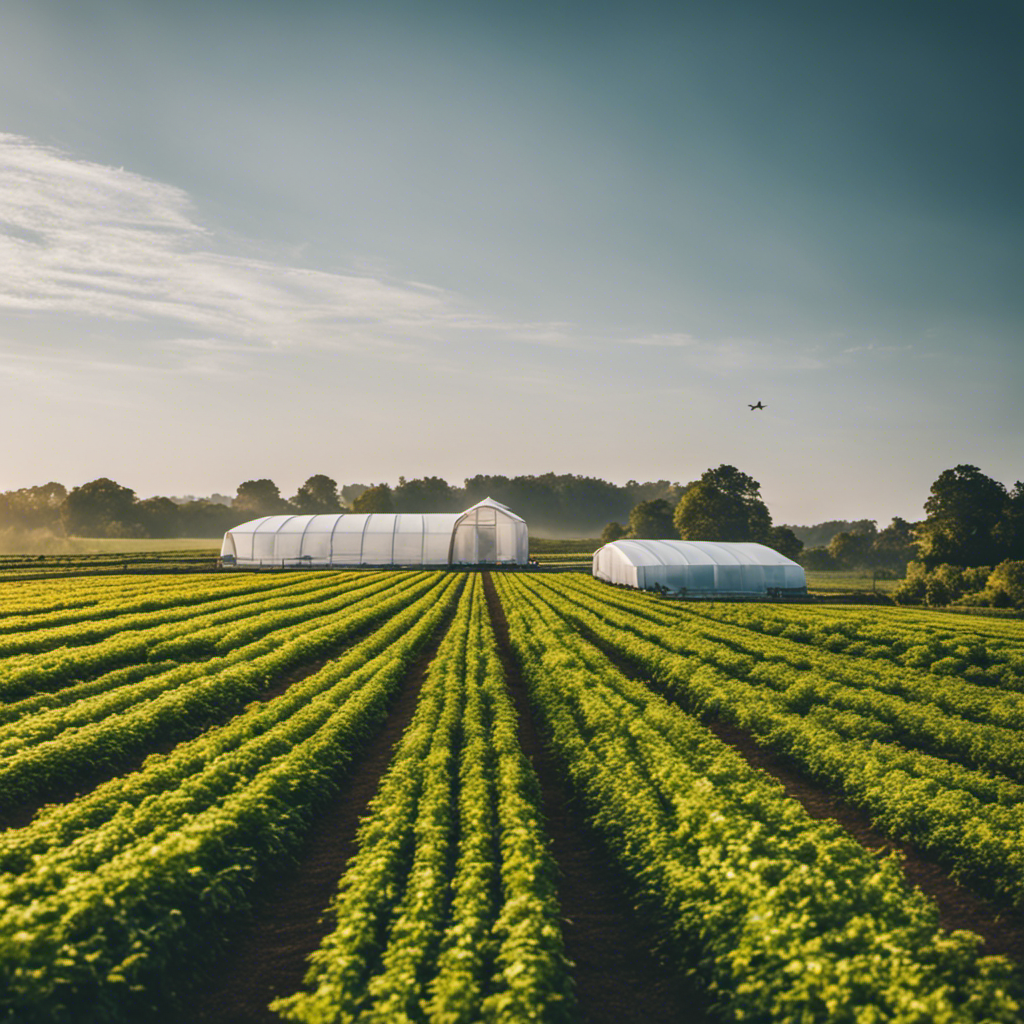
To enhance your farm’s eco-friendly pest control efforts, consider using physical barriers as an effective method to deter pests. Physical barriers can help protect your crops and livestock while reducing the need for harmful chemicals.
Here are three options you can consider:
-
Sustainable fencing: Install sturdy fences made from sustainable materials like bamboo or recycled plastic. These fences can keep out larger pests such as deer or rabbits, preventing them from accessing your crops or causing damage to your fields.
-
Organic repellents: Use natural repellents like garlic spray or peppermint oil to create a barrier that pests find unappealing. You can spray these organic repellents around your fields or garden beds to deter insects and other pests from entering.
-
Netting and mesh: Cover your plants or crops with netting or mesh to create a physical barrier against birds, insects, and other small pests. This method allows air and sunlight to reach your crops while keeping pests at bay.
Crop Rotation

Crop Rotation: A Sustainable Practice for Healthy and Productive Farms
To continue safeguarding your crops and minimizing the need for harmful chemicals, let’s explore the practice of rotating your crops. Crop rotation is a simple yet effective technique that can improve soil health and optimize yields. By systematically changing the type of crop grown in each field season after season, you can disrupt pest and disease cycles, reduce soil erosion, and enhance nutrient availability.
Implementing crop rotation involves diversifying your crops and strategically planning the sequence of crops grown in each field. For example, in the first year, you can plant corn, which helps break pest cycles and reduce soil erosion. In the second year, soybeans can be grown, which increases nitrogen levels and improves soil structure. In the third year, wheat can be planted, which suppresses weeds and adds organic matter to the soil.
By adopting crop rotation, you can harness the power of nature to maintain a healthy and productive farm. This sustainable practice not only protects your crops but also contributes to the long-term resilience and sustainability of your farm. It promotes soil health, reduces reliance on chemicals, and optimizes yields, all while providing environmental benefits.
Incorporating crop rotation into your farming practices requires careful planning and consideration of factors such as crop compatibility, nutrient requirements, and pest management. It’s important to understand the specific needs of each crop and how they can complement each other in a rotation system.
Crop rotation is a well-established and scientifically proven practice that has been used for centuries. It’s a practical and sustainable approach to agriculture that can benefit both farmers and the environment. By implementing crop rotation, you can improve soil health, reduce the risk of pests and diseases, and optimize the productivity of your farm.
Companion Planting

If you’re looking for eco-friendly pest control methods for your farm, consider incorporating companion planting into your crop rotation strategy. Companion planting involves growing different plants together to create a mutually beneficial environment.
Here are three reasons why companion planting can improve soil health and optimize yield on your farm:
-
Natural pest control: Certain plants, like marigolds and garlic, naturally repel pests. By planting these companion plants alongside your main crops, you can reduce the need for chemical pesticides and protect your plants from harmful insects.
-
Nutrient cycling: Companion plants with different root structures and nutrient requirements can improve soil health. For example, legumes like beans and peas help fix nitrogen in the soil, which benefits neighboring plants that need this essential nutrient.
-
Pollination and biodiversity: Including flowering companion plants, such as sunflowers and chamomile, in your crop rotation can attract pollinators and beneficial insects. This promotes biodiversity and ensures better pollination, resulting in higher yields.
Incorporating companion planting into your farming practices not only supports a healthier ecosystem but also helps you achieve greater productivity and sustainability.
Conclusion
Implementing eco-friendly pest control methods on your farm not only improves its elegance but also contributes to a healthier environment. By attracting natural predators, using biological controls, creating physical barriers, practicing crop rotation, and adopting companion planting, you can establish a sustainable and thriving farm ecosystem.
This transformation will result in a pest-free farm that showcases the power of nature and sustainable practices. Your farm can serve as a model for others to follow, highlighting the benefits of environmentally-friendly pest control.

